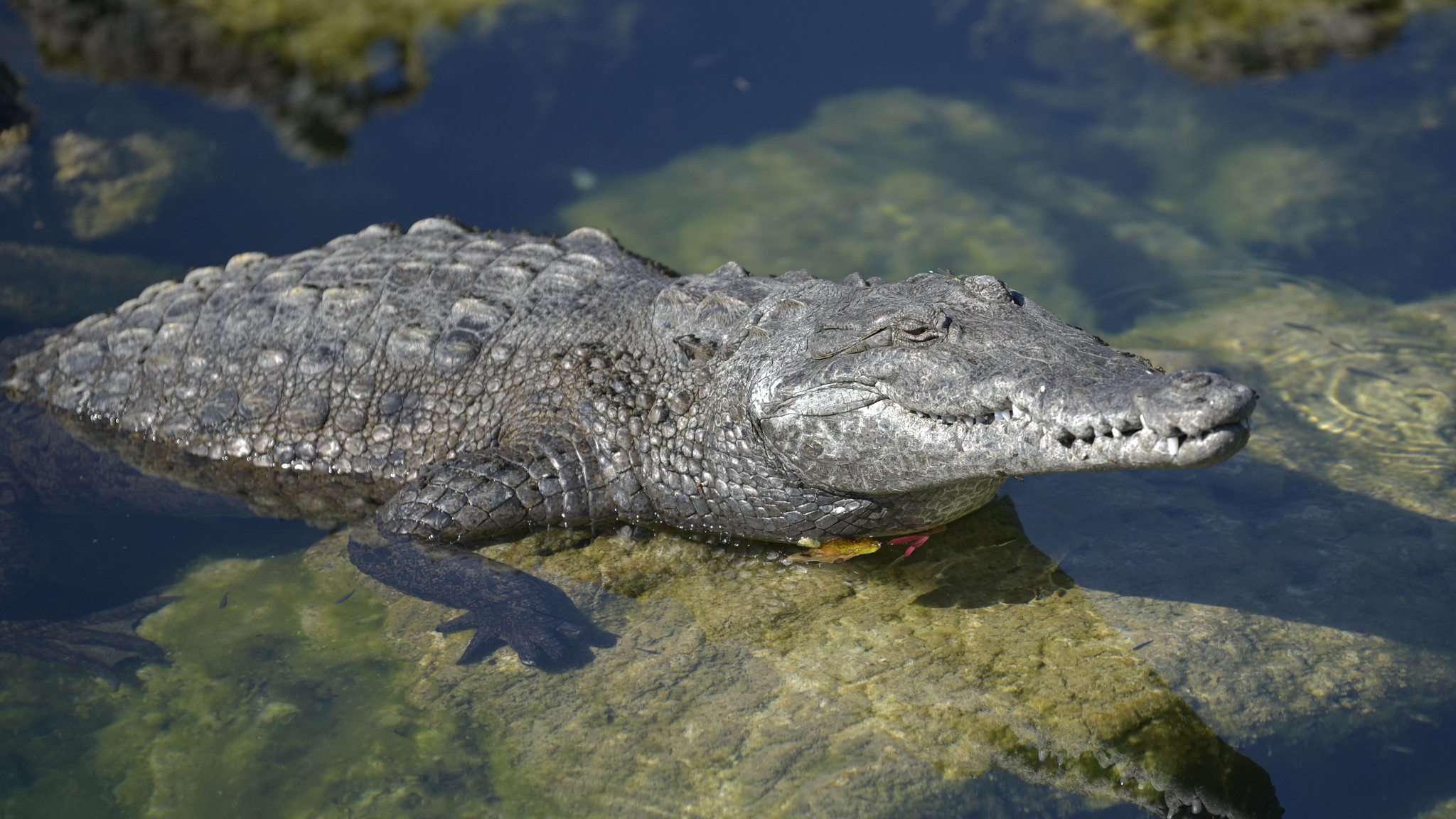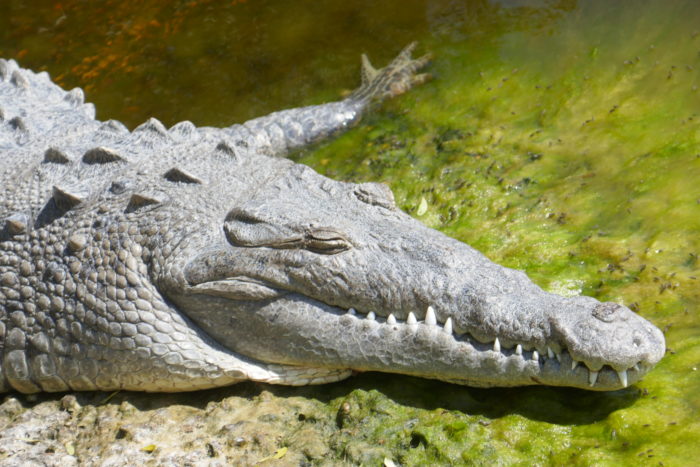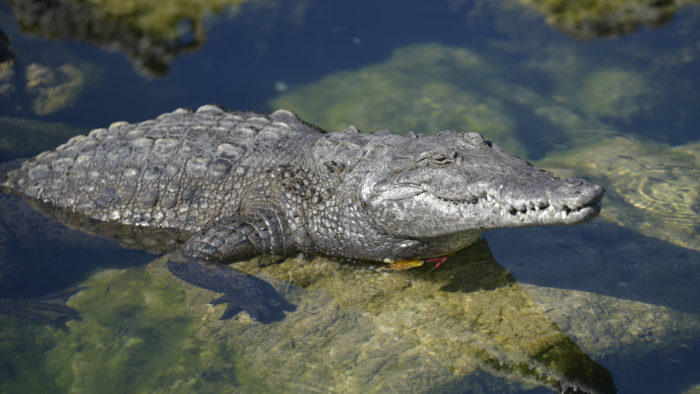
Sea Wonder: American Crocodile

Photo credit: Phil Vendretti
Description
The American crocodile belongs to a group of reptiles called crocodilians, which are the largest living reptiles. Although they are often mistaken for their close relative the alligator, the American crocodile is distinguishable by the grayish green coloration of their rough scaly skin, and their narrow, tapered, triangular snout. American crocodiles have a lizard shaped body, with a long muscular tail and four short legs. Male crocodiles can reach up to 20 feet in length, while females are generally smaller at around 8-12 feet. A large adult crocodile can grow to over 2,000 pounds!
The fourth tooth on either side of their lower jaw is always visible even when their mouth is closed, leading to their iconic crocodile “smile”. Even when they are submerged with just their head out of the water, crocodiles are still able to see, hear, and breathe since their eyes, ears, and nostrils are located on the top of their head. Their brains and hearts are more advanced than any other reptile alive today. Often seen sunning themselves, crocodiles are ectothermic, meaning they must depend on external heat sources to regulate their body temperature.
Diet & Habitat
American crocodiles are found from the southern tip of Florida down both coasts of southern Mexico, Central America, and northern South America, as well as islands in the Caribbean. Only two species of crocodilians are native to the United States, and south Florida is the only place where both these species coexist. The American crocodile prefers to live in brackish and saltwater habitats like coastal lagoons and mangrove swamps. Adult crocodiles survive in saltwater by extracting the salt from their body by using specialized salt glands on their tongue.
Crocodiles are a shy and reclusive top predator, and hunt by remaining completely still in the water. When prey is in sight, the crocodile will grab the prey in its jaws and drown it by rolling in a maneuver known as a “death roll”. Crocodiles eat a wide variety of prey, but their diet mainly includes fish, crustaceans, turtles, and the occasional bird or mammal. Crocodiles are also known to ingest small stones, which helps them digest their meals and control their buoyancy in the water.
Life History
Crocodiles reach sexual maturity at about 8-10 years of age. Both male and female crocodiles use courtship and territorial behaviors in order to attract potential mates. These courtship rituals can be elaborate and last for days. Males will exhibit vocalizations (including infrasonic underwater sounds) and tail slapping, and females respond in kind by raising their snout and arching their tail. Finally, the male and female will rub their snouts together and submerge below the water.
Crocodiles nest during the annual dry season, building elevated nests in sand or soil to lay their eggs. Clutch size is typically between 30 to 60 eggs. Unlike egg-laying birds and mammals, the sex of the embryos is not determined at egg fertilization, but by the nest temperature at which the eggs are incubated. Temperatures below 86°F result in mostly female hatchlings, while warmer temperatures lead to mostly male hatchlings. The eggs incubate for about 85 days until hatching occurs in late July to early August. During hatching, the mother crocodile will dig open the nest, and may assist the hatchlings to water or nursery sites. Within a day or two, the adult crocodiles will depart the nesting area, and the hatchlings will become self-sufficient and fend for themselves. American crocodiles live an average lifespan of 45 years in the wild.
Threats & Conservation
The American crocodile is classified as “Vulnerable” by the IUCN Red List and the U.S. Fish and Wildlife Service and has been protected as a threatened species under the Endangered Species Act since the 1970s. The American crocodile was historically hunted for its hides, leading to severe population declines. Thanks to these conservation and management, the American crocodile is a conservation success story. The population of American crocodiles in southern Florida has been steadily increasing. Current threats include habitat loss from coastal development, road mortality, and illegal hunting. The American crocodile is a flagship species for ecosystem restoration due to its sensitivity to changes in ecosystem hydrology, salinity, and system productivity. Protection of crocodile habitat in Florida and restoration of Everglades ecosystems will help ensure the survival of this species.

Photo credit: Avery Bristol/Florida Fish and Wildlife
